Jun 14 2023
News from Kruse: June 2023
By Billie Childress
 These folks are fun and great gardeners! I look forward to Wednesday mornings in the Kruse House Museum Gardens. Please consider joining us. The participation is totally flexible. Sometimes only 4-5 of us are there but every person makes a difference. You will fit right in and a couple hours of your time will be greatly appreciated. We work every Wednesday morning at 9am. Just show up with minimal tools (we have extras in shed as needed). Contact Billie 630-862-1213 with any questions.
These folks are fun and great gardeners! I look forward to Wednesday mornings in the Kruse House Museum Gardens. Please consider joining us. The participation is totally flexible. Sometimes only 4-5 of us are there but every person makes a difference. You will fit right in and a couple hours of your time will be greatly appreciated. We work every Wednesday morning at 9am. Just show up with minimal tools (we have extras in shed as needed). Contact Billie 630-862-1213 with any questions.
WE ARE READY: Garden Club is meeting in the Kruse Gardens in June. You are gonna love the gardens! And we hope you’ll return often with friends, family and neighbors to share this garden with others. Sharing this garden is really what we’re all about. It’s a locus of beauty, inspiration, education, contemplation and so much more.
NEW STUFF: We have added a trellis, mailbox, and some rock borders. And of course we are always tucking in new plants. It’s tough to get a new plant established because we’re not there all the time to keep an eye on them and it’s a big garden.
Looking forward to seeing you in the garden!
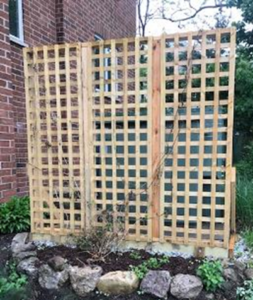 Although April’s lush rows of grape hyacinths are now gone, clumps of irises and other later spring plants are blooming in the front bed on the east side. In the backyard the branches of the redbud are coated with rosy blooms, one of the real treats of spring. And a new lattice screen, built by Kerry Perry and a friend of hers, has been erected in front of the condominium transformer at the end of the driveway. We are fast moving toward June when the garden will be at its height.
Although April’s lush rows of grape hyacinths are now gone, clumps of irises and other later spring plants are blooming in the front bed on the east side. In the backyard the branches of the redbud are coated with rosy blooms, one of the real treats of spring. And a new lattice screen, built by Kerry Perry and a friend of hers, has been erected in front of the condominium transformer at the end of the driveway. We are fast moving toward June when the garden will be at its height.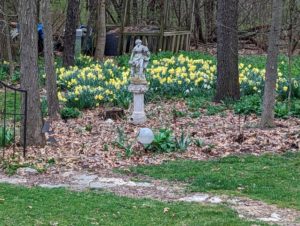
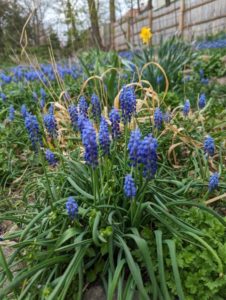 Nevertheless, we know that it will warm up again, the snow will melt quickly and April will leap out again to fill our gardens with abundant and glowing color.
Nevertheless, we know that it will warm up again, the snow will melt quickly and April will leap out again to fill our gardens with abundant and glowing color.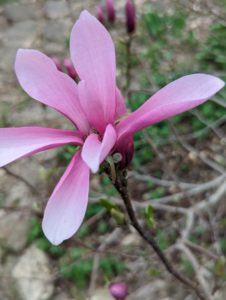
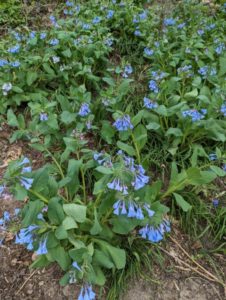
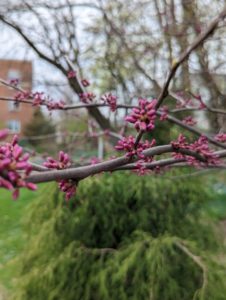
 - Membership
- Membership